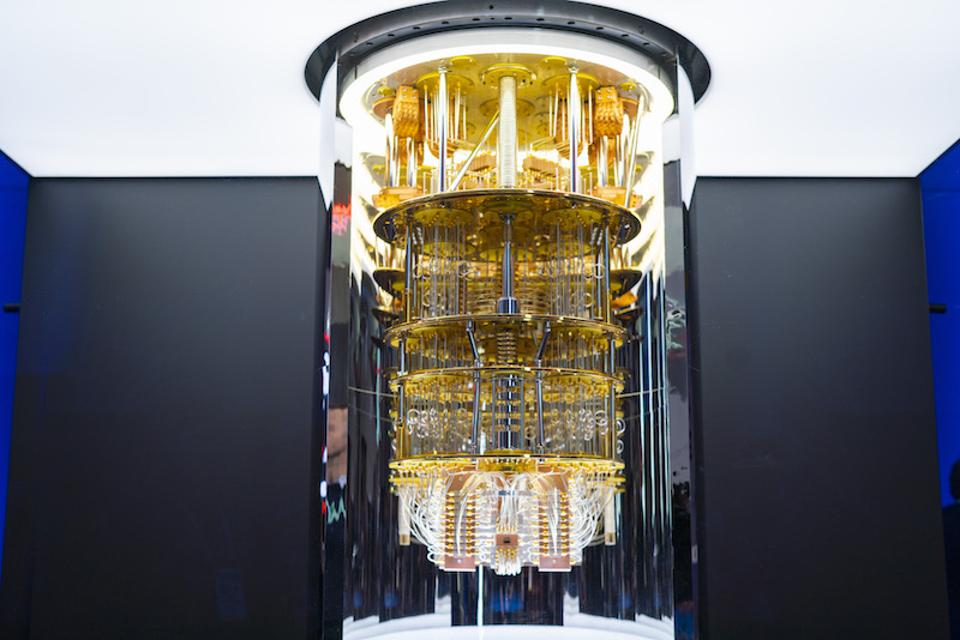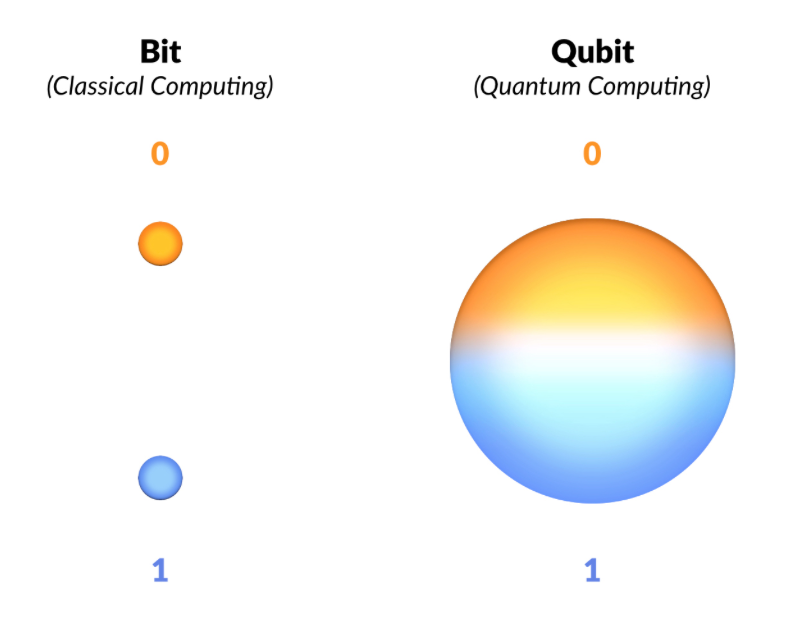The Basic Concepts of Quantum Computers
Emma Ylagan. 04/22/2022
When most people hear the term “quantum computing” they probably think of complex theories, with futuristic-looking computers. Although it is inherently a higher-end subject, utilizing concepts of advanced calculus and physics, the core ideas can be broken down into simple, easy-to-visualize components.
A Look at a Quantum Computer
Although the core ideas of quantum computing can be explained quite simply, quantum computers themselves are quite complex. When hearing the term “quantum computer”, if you thought of something futuristic, you aren’t wrong, but it probably looks a little different than you would expect. This is a quantum computer.

It’s suspended in this chamber-like contraption for several reasons, including temperature regulation and noise reduction, and the computer itself looks quite complex with lots of parts, but again, this can all be broken down into the fundamental ideas behind quantum computing. But first, the focus lies on what this device is, and how it compares to the Dells and Macs we typically use.
Classical vs Quantum
First off, we call these more traditional computers “classical computers’’. Classical computers utilize bits to store data and information; everything you see and do on a computer can be broken down into 0s and 1s. Quantum computers, on the other hand, use quantum bits, not classical bits. A common abbreviation for this term is “qubit”. A qubit is essentially able to store more information than a classical bit ever could. But how? That brings us to our first quantum concept: superposition.
Superposition
Superposition is the phenomenon where something is considered to be two things at once. This mind-bending concept can be simplified using a famous analogy called Schrodinger’s cat. The analogy goes like this: You put a cat in a bag with some poison that could be released at any moment. Assuming you can’t receive any tells of the cat’s well-being from looking at the bag itself, at any moment in time, the cat can be considered both dead and alive. That is, until you actually open the bag.
This is the exact concept used in qubits. Qubits are found in a state of superposition, as was the cat, in which it can be considered both a 0 and 1. Of course, this is only until it is measured, in which it collapses into either-or.

This is what gives qubits the upper hand when compared to classical bits. Consider a computer with 4 bits, each one being definitively 0 or 1. There are 16 different combinations you can make with them. That means you would need 64 bits (16 combinations x 4 bits per combination) to cover all of the possible combinations. However, when we look at qubits and take into account the fact that they are both 0 and 1 simultaneously, you only need four qubits to “cover” all combinations. This creates a high level of efficiency, especially when dealing with large amounts of data.
Entanglement
The next concept of focus is quantum entanglement. When two qubits become “entangled”, they are considered permanently linked. This means that no matter how far apart they are, they will always mirror each other’s state (either 0 or 1). Measuring one will always yield information in knowing the state of the other, and vice versa.
Thinking about this visually, if you have a qubit right in front of you with its entangled partner halfway across the universe, and you measured the one in front of you, collapsing its state of superposition, its partner would also collapse, and you’d know this information instantaneously. Within a quantum computer, this means that you can take measurements of many qubits at the same time, dramatically increasing its computing power.
Applications
There are many different applications to the concepts of quantum computing, as well as quantum computers themselves. For example, when we look at the neuroscience and psychology field, there are many challenges posed by the lack of computer data storage when doing something like mapping out the human brain. A quantum computer, given its high levels of efficiency and power, could help with this data storage issue.
Something to keep in mind, however, is that quantum computers aren’t the definitive future of the computer itself. As opposed to some initial thought, quantum computers aren’t always better than classical computers. They are, without a doubt, extremely helpful in specific situations that involve heavy calculations or require an immense amount of data, but generalizing that they are always “better” would be inaccurate. Some tasks simply work better on classical computers, so the “hype” around the quantum computer is more about being able to have this new tool that we can use, an option when the need for it arises.
Cover Photo: (Wilson Center)
